Strategic Tic-Tac-Toe Board Slam
My son discovered Strategic Tic-Tac-Toe on Cool Math Games when he was younger. It is such a interesting twist on an old favorite. When trying to come up with a new math game for their Challenge IV class, my son and husband collaborated with their class to take the traditional Board Slam (or National Number Knockout) and mash it up with Strategic Tic-Tac-Toe. The end result? A strategic twist on a fast moving number game.
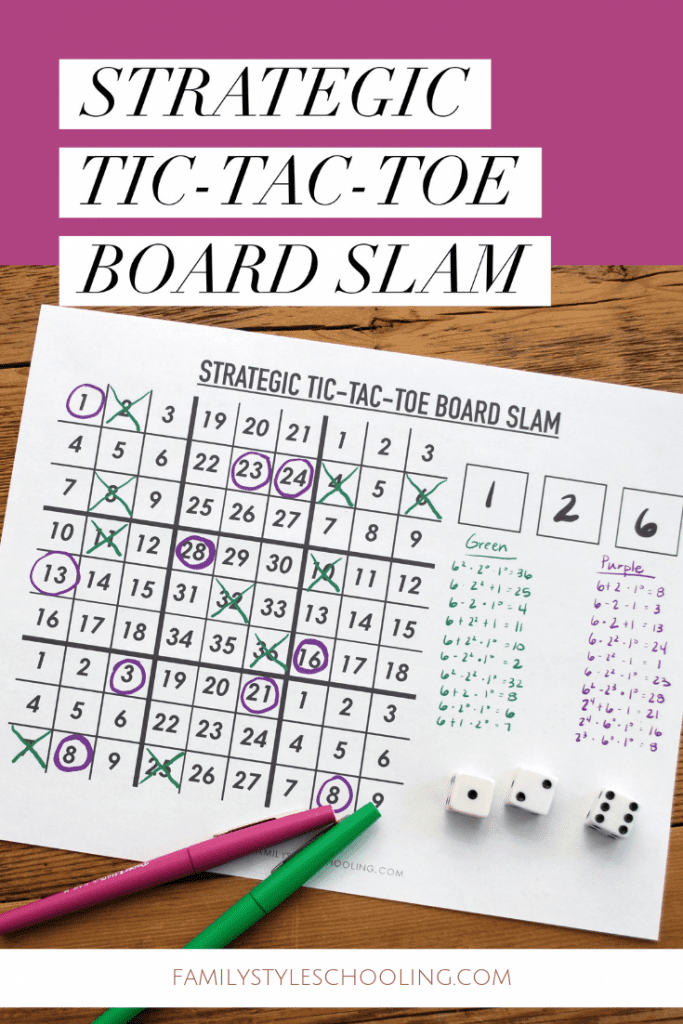
For a free printable game board, read to the end!
Board Slam Basics
Board Slam is a math game where you roll three dice and use math operations to calculate all the numbers on the board 1-36. You must use every number once and only once. This gives students great practice in manipulating numbers.
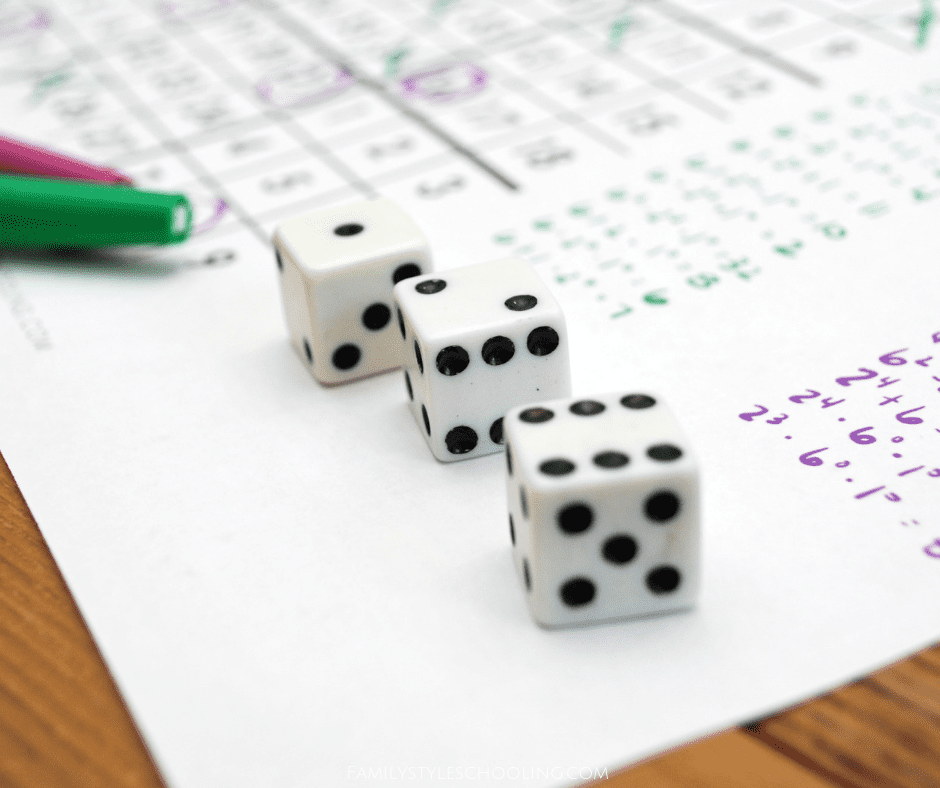
Not every combination of numbers will clear the board, but you can look up possibilities and solutions on this Board Slam Calculator. There are twenty-five combinations that do clear the board however, so there is a lot of variety with which to work.
For example, if you roll a 2, 3, and 4, you can combine them to form these equations:
- 2 + 3 + 4 = 11
- 2 + 3 + 40 = 6 (numbers to the zero power are equivalent to "1")
- 2 + 3 - 40 = 4
- 2 x 3 - 40 = 5
- 42 + 3 + 2 = 21
- 42 + 32 + 22 = 29
- 42 + 32 + 23 = 33
- 40 + 33 + 23 = 36
Now Add Strategic Tic-Tac-Toe
In the game Strategic Tic-Tac-Toe (or Ultimate Tic-Tac-Toe), the first player starts in the center square. The position in the inner square that the first player plays sends the second player to that section of the larger tic-tac-toe board. To make a play, players have to formulate the number in the box to place their mark.
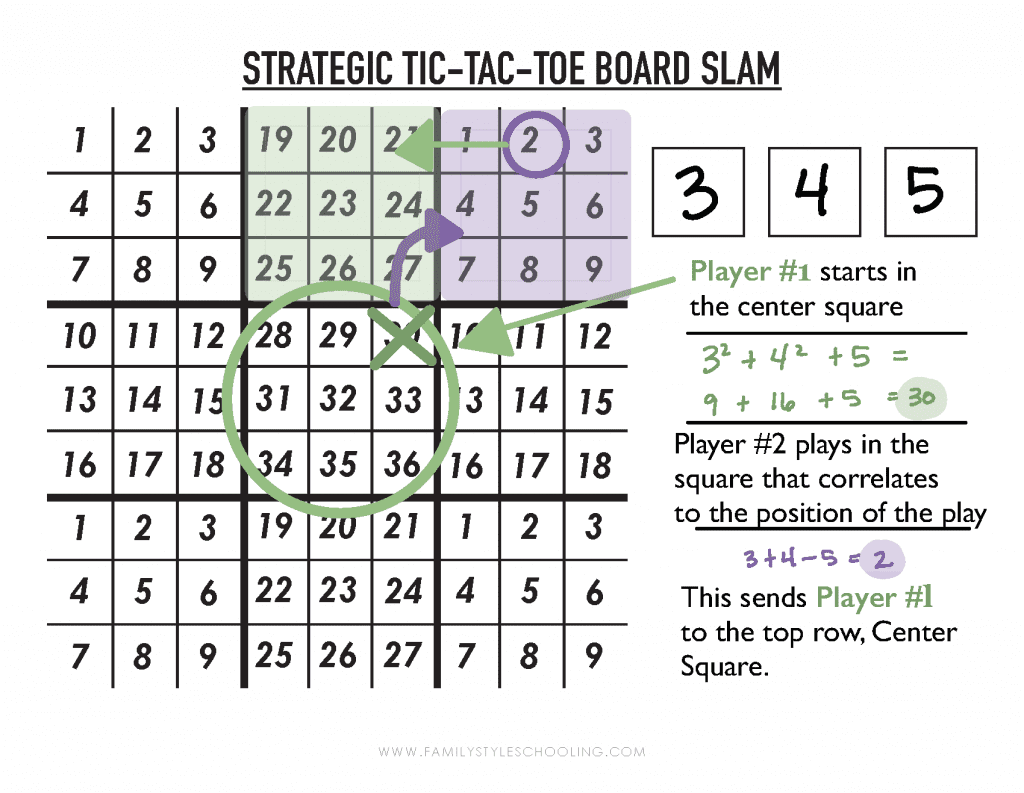
As play continues, the strategy starts to build. Traditional tic-tac-toe strategies don't work the same when you're playing on a larger board. As the board fills up, you can't just play where you want because you might send your opponent to a square where they can get three in a row.
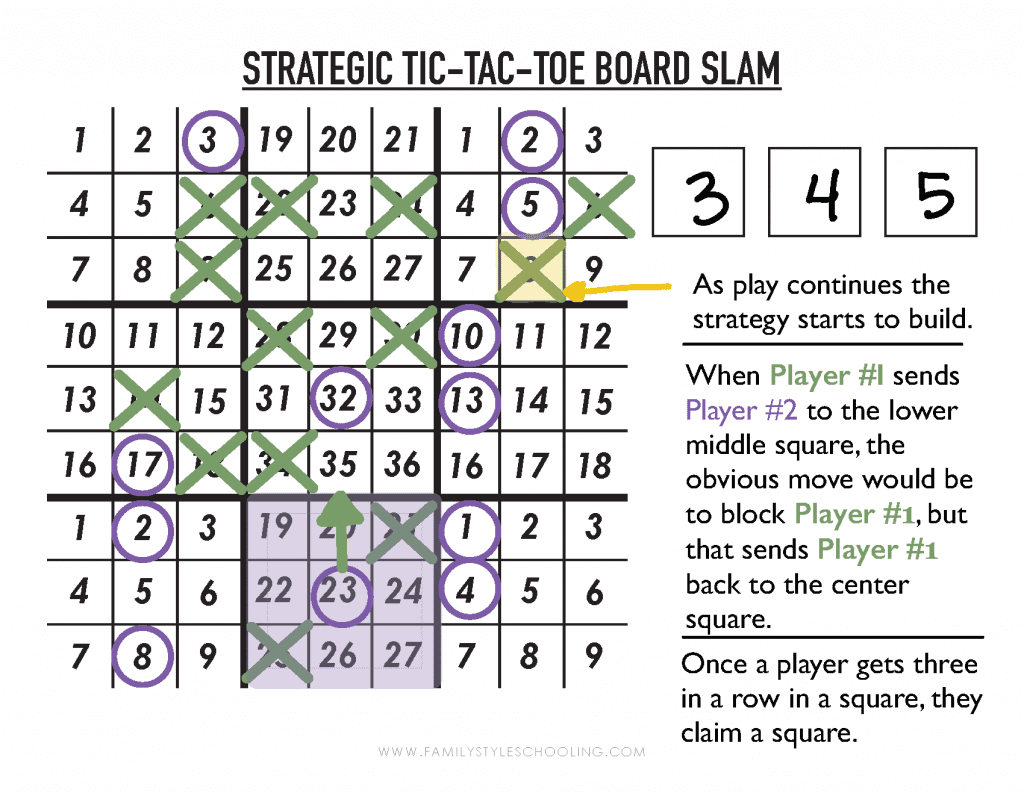
Once a square is claimed, it becomes a wild square. If one player is sent to a square that is captured, they can choose any square to play in next. This would allow the other player to head to a square that they can gain three in a row.
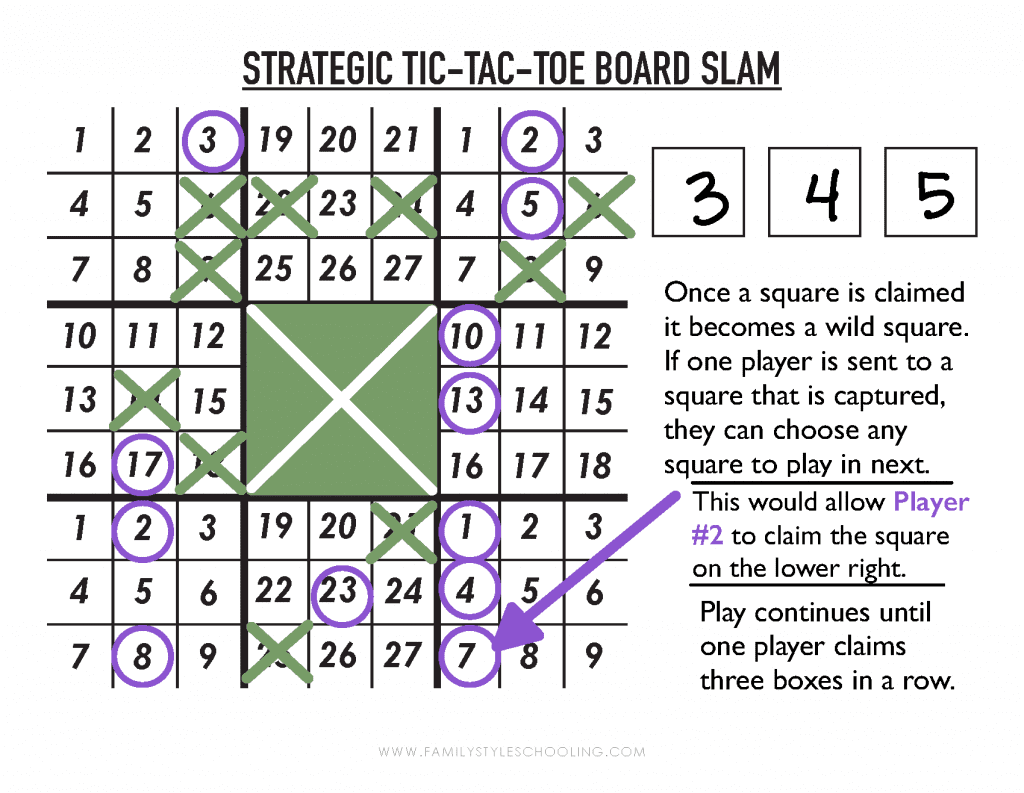
Once they get three in a row, the square is claimed. The goal is to get three of the big squares in a row to make a super tic-tac-toe.
If you're still wanting a bit more explanation, check out this video:
Playing with a group
If you're playing with more than two players, this is also a great game to collaborate as a team. My husband had five students in his Challenge IV class, and the first few rounds of the game they played class vs. tutor. Eventually they shifted to three on three. This is a great way to cultivate team work as they work through different strategies and volume control! They can't give away secrets to the other team!
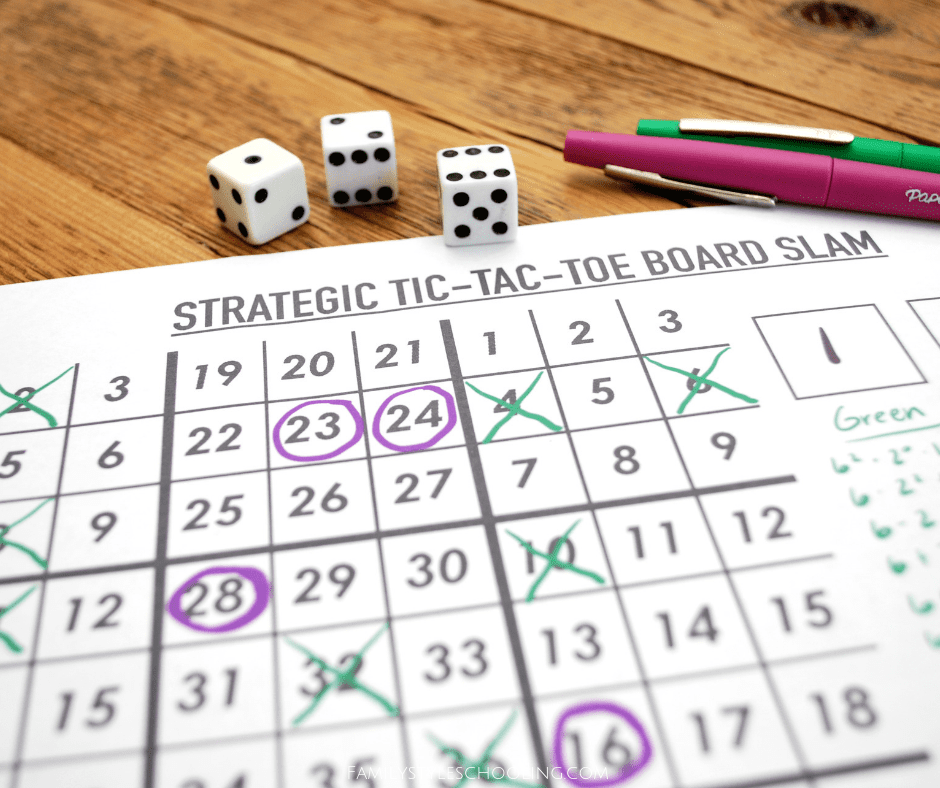
While it may take a few rounds of play to get the hang of it, the depth of the strategy becomes really addicting! You will want to play this all the time!
Download Your Free Game Board

Download your FREE STRATEGIC TIC-TAC-TOE BOARD SLAM GAME BOARD and enjoy a new twist to an old favorite math game!
Betsy Strauss is an unexpected homeschooler, mother of three, who is in a relationship with a sweet man for life. She loves reading books, drinking coffee, and learning anything with her kids.


Hey Betsy!
I am so thankful for your website! I”m tutoring Challenge III this year and am wondering with the 3 numbers that you roll, can you re-roll during the same game or do you stick with the same 3 numbers Per Game? for the whole Tic-Tac-Toe/Number Knockout game?)
Thanks! Amy
We typically keep the same numbers throughout the whole game. There are times students have been encouraged to get the answer another way. Maybe you could modify with a rule that keeps them from getting an answer the same way twice. In other words, if the numbers were 2, 3, and 4, and the number they were trying to reach was 14, they couldn’t use 3×4+2 twice. Feel free to modify as you like – it’s a fun experiment!
Have you ever had the smaller squared end up in a cat where no one wins? What did you do then?
Ha! I don’t recall that we have, but I think that’s because when it got close, the kids recognized it and changed their strategy! There are so many options, which makes surprise moves a little more frequent. You may be able to discuss beforehand your (or their) plan if it did happen – possibly the team with the most marks gets the small square?